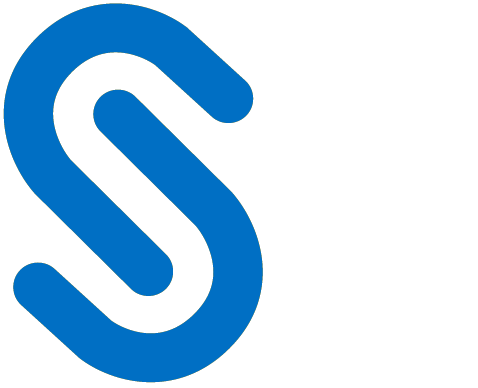Release Notes
Introduction
This release notes offer brief, high-level descriptions of the new features of HaloCAD KPro. We recommend looking through these release notes before installing HaloCAD KPro to understand any current limitations or bugs that apply to this version of the software.
Product Description
Information that resides inside SAP is downloaded regularly by users to generate reports, spreadsheets, presentations, and other documents. Additionally, drawings are used in the creation and management of intellectual property (IP) in a variety of industries, including the automobile and aviation industries. These designs are created digitally using computer-aided design (CAD) tools and, due to business requirements, are shared with others outside the organization, exposing them vulnerable and exposed.
HaloCORE and HaloCAD effortlessly integrate Microsoft Purview Information Protection (MPIP), formerly known as Microsoft Information Protection (MIP), the leading technology for Enterprise Digital Rights Management (EDRM). Acts as a shield for your CAD files by automatically labeling them with MPIP whenever they leave your secure IT perimeter.
System Requirements
The following table lists the requirements for HaloCAD KPro.
Required components | Details |
|---|---|
The following components are necessary for a DMS-integrated environment.
|
|
For an ECTR integrated environment with CAD application, HaloCAD for CAD application, as well as the components listed above, are necessary. | Please refer to the HaloCAD Installation Manual for more information on how to set up the add-on. |
Requirements
Code Quality and Security
Secude focuses on software quality and security. This is accomplished by adhering to and exceeding best practices in development, testing, and quality control. Secude has chosen SonarQube as the first building block for building and implementing a robust continuous code quality assurance (QA). SonarQube is a platform for statical code analysis for continuous inspection of code quality. It performs automatic reviews of code to detect bugs, code smells, unit test coverage, and security issues in 29 programming languages.
SonarQube is utilized throughout the development process at Secude and only the highest marks are accepted for a product to be released. It helps to regulate code quality from the beginning of development, find and repair issues promptly, and improve overall software stability.
Each build report can be found under its relevant version heading in this release notes.
Reliability Rating
A = 0 Bugs
B = at least 1 Minor Bug
C = at least 1 Major Bug
D = at least 1 Critical Bug
E = at least 1 Blocker Bug
Security Rating
A = 0 Vulnerabilities
B = at least 1 Minor Vulnerability
C = at least 1 Major Vulnerability
D = at least 1 Critical Vulnerability
E = at least 1 Blocker Vulnerability
Security Review Rating
The Security Review Rating is a letter grade based on the percentage of Reviewed (Fixed or Safe) Security Hotspots.
A = >= 80%
B = >= 70% and <80%
C = >= 50% and <70%
D = >= 30% and <50%
E = < 30%
Maintainability Rating
A=0-0.05, B=0.06-0.1, C=0.11-0.20, D=0.21-0.5, E=0.51-1
The Maintainability Rating scale can be alternately stated by saying that if the outstanding remediation cost is:
<=5% of the time that has already gone into the application, the rating is A
between 6 to 10% the rating is a B
between 11 to 20% the rating is a C
between 21 to 50% the rating is a D
anything over 50% is an E
Build 6.7
New Features
There are no new features in the current release.
Improvements
This section lists the improvements in the current release.
As part of the rebranding, the current version has undergone few changes, such as renaming the folder from 'halocore' to 'HaloCAD'.
Limitation
This section lists the limitations of the current release.
In previous versions, the KPro proxy supported the following scenarios.
Case 1: Operating HaloCAD KPro and HaloENGINE on the same machine.
Case 2: Running HaloCAD KPro and HaloENGINE on different machines
As of version 6.6, the KPro proxy only supports Case 1. However, the configuration tool will show Case 2 options as well. Case 2 will only be functionally available based on user demand.
Fixed Issues
There are no fixed issues to list for this release.
Known Issues
This section lists the known issues in the current release.
File names with special characters will not be downloaded or uploaded to the Content Server. HKPRO-117, HKPRO-111
Encrypted SOLIDWORKS and Creo CAD files will not be decrypted during upload to the Content Server. HKPRO-193
When you answer
trueto the question "Is signed content server URLs used" in thehalo-engine-toolsoption, it gets marked asfalse. HKPRO-135Protected
.bmp/.jpe/.tifffiles will not be decrypted during upload to the Content Server. HKPRO-192Protected Creo and SOLIDWORKS CAD files will not be decrypted when uploaded to the Content Server. HKPRO-193
Quality Gate Report
Please see the table below for a list of SonarQube's key parameters for this version. Refer to the "Code Quality and Security" section for more information on rating definitions.
Metric | Value |
|---|---|
Coverage | 80.2% |
Maintainability Rating | A* |
Reliability Rating | A* |
Security Hotspots Reviewed | A* |
Security Rating | A* |
Quality Gate report
